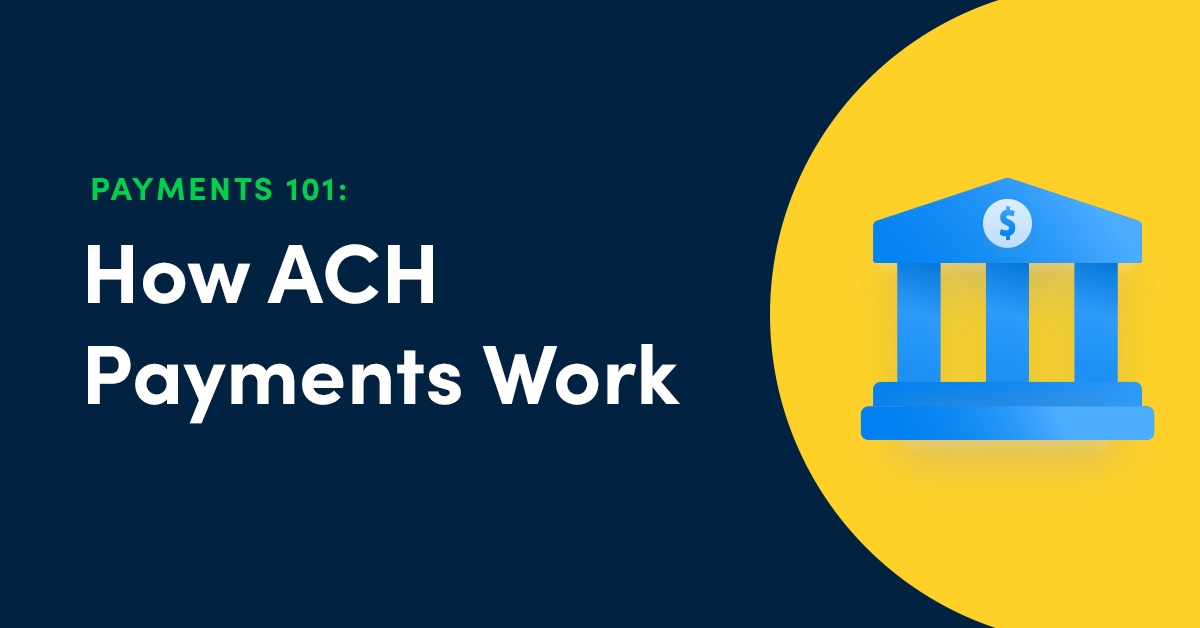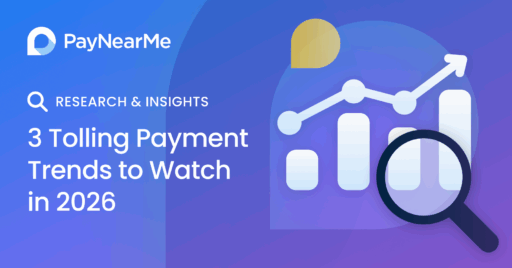How ACH Payments Work

Through 2020, the most common bill pay method remains bank account, also known as ACH payments. Here is a brief overview explaining how ACH payments work.
The ACH system connects banks to one another to facilitate electronic transfers among them. ACH payments work by debiting a customer’s checking or savings account and crediting your bank account in response to a transfer request. As a result, ACH payments provide customers with bank accounts a quick and convenient way to pay you.
ACH 101: Understanding the Basics
ACH stands for Automated Clearing House, and is a batch processor of bank transfers that networks banks to one another. The ACH infrastructure is operated by the Federal Reserve and a banking association called The Clearing House.
An ACH payment request is created by an originator, usually a merchant of some kind (like your auto loan provider or mortgage) or a consumer directly. The originator’s bank, called the originating depository financial institution (ODFI), receives a payment file from the originator that contains the banking information for the other party. The ODFI uses this payment file to make an ACH entry. ACH entries are then transmitted electronically to the ACH operator.
The ACH operator sorts ACH entries so all the entries for a bank are batched together. The bank receiving the ACH entries is called the receiving depository financial institution (RDFI). The RDFI processes the ACH entries to create a transaction in the receiver’s account.
The power of ACH payments is that the originator can be either the customer or the biller. That is, a customer can order a one-time ACH payment to your bank or a customer can authorize you to request recurring ACH payments from the customer’s bank.
One-Time ACH Payments
In a one-time payment, a customer can use a payment processing provider to create the ACH payment request ordering the customer’s bank, the ODFI in this case, to pay the biller. The payment processor uses the payment request to create a payment file by adding in the biller’s bank routing number and account number. The payment processor submits the payment request to the ODFI.
ODFIs process payment files into ACH entries by verifying that the customer’s checking or savings account balance can cover the payment. If the balance is sufficient, the ODFI debits the customer’s account and creates an ACH entry.
Although ODFIs process payment files as they are received, ODFIs transmit ACH entries to the ACH operator in batches. This means that every financial institution has a cut-off time for ACH entries to be transmitted.
If a payment file is received from the payment processor before the cut-off time, the ACH entry resulting from that payment file is transmitted the same day. However, if payment files are received after the cut-off time, the ACH entry is held until the next day.
Similarly, after the ACH operator sorts ACH entries, it transmits the ACH entries to the RDFIs in batches. Because the ACH system is electronic, the ACH operator transmits ACH entries to banks three times per day. Again, if an ACH entry is sorted after a cut-off time, it is held for the next batch transmission.
RDFIs use the ACH entry from the customer to create a credit in the biller’s account. Because of the various cut-off times, the transaction usually settles within one day for the originator and one to two days for the receiver.
Recurring ACH Payments
Unlike one-time payments, recurring payments usually originate from the biller rather than the customer. To create a recurring ACH payment, the customer authorizes a payment processor to charge the customer’s account on a recurring basis. This charge could be a fixed amount, like a car loan payment, or a varying amount, like a utility bill payment.
On the recurring schedule, the payment processor creates a payment request using the customer’s bank information and submits it to the biller’s bank, which acts as the ODFI in this transaction. The ODFI credits the biller’s account and creates an ACH entry requesting payment from the customer’s bank.
The ODFI transmits its batch ACH entries to the ACH operator which, in turn, sorts them by RDFI. The RDFI receives its ACH entries in batches. For payment requests, the RDFI verifies the customer’s balance and debits the customer’s account if the balance is sufficient. The transaction usually settles in one to two days for both the originator and receiver due to batch processing and the need to verify the customer’s balance before settling the transaction.
Exploring the Benefits of ACH Payments for Billers
ACH payments provide a convenient process for customers to pay their bills. But for billers, ACH payments provide many benefits including:
- Fast settlement: In contrast to paper checks, ACH payments settle in one to two days. This improves cash flow by depositing payments quickly and avoiding the wait period associated with mail, check processing and funds clearing.
- On-time payments: When a customer sets up recurring ACH payments, billers receive customer payments on schedule and on time without the need for billing reminders and late fees. Moreover, recurring ACH payments assures customers that their payments will not be forgotten or late due to lost or delayed mail.
- Inexpensive: Most ACH payments can be processed for a very small fee, often less than debit and credit card payments. This is attractive for merchants who want to save on processing costs, and consumers who want to avoid costly convenience fees.
- Electronic records: The payment processor, ACH operator, ODFI, and RDFI each create an electronic record of the payment. This helps billers keep track of payments in a single file, helping with exception handling, reconciliation and more.
Accept ACH Payments and More with PayNearMe
PayNearMe offers a full suite of bill pay processing features, including the ability to accept ACH payments alongside other electronic methods including cash, cards, and Apple Pay/Google Pay.
To learn more about accepting electronic payments from your customers, request a demo to see the PayNearMe platform in action.



